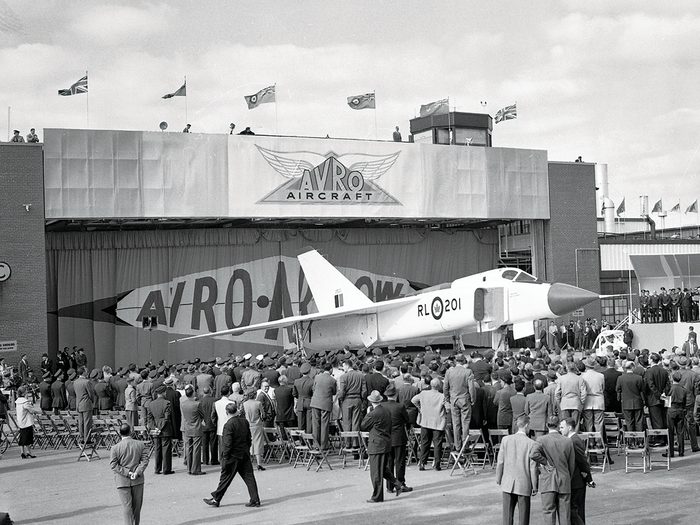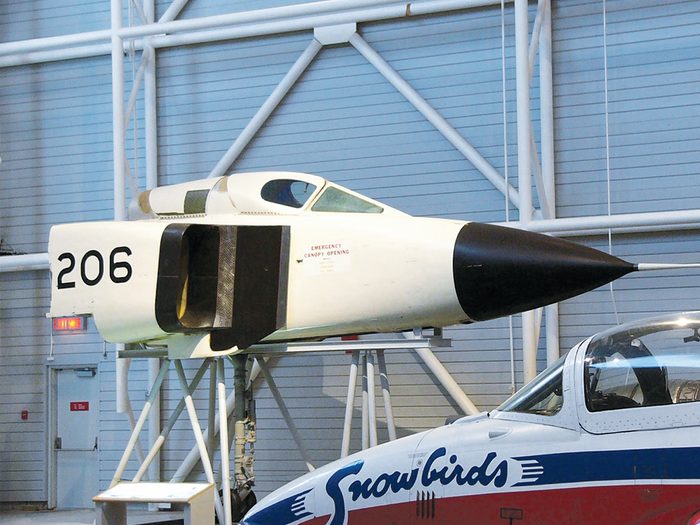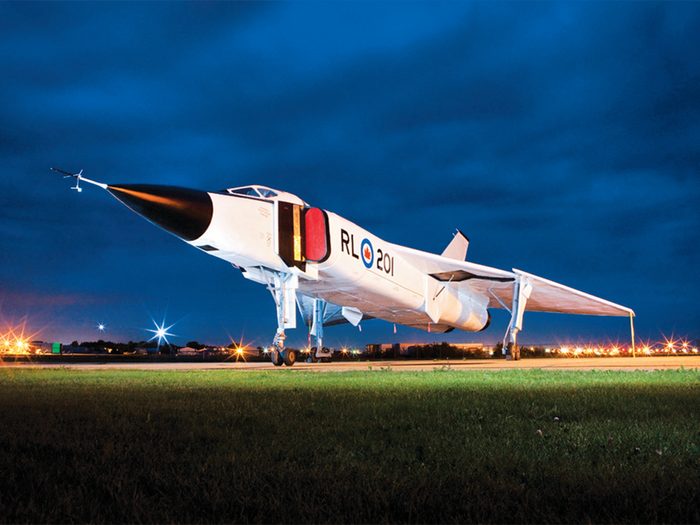
The Avro Arrow Story
The Avro CF-105 Arrow was unveiled to the public on October 4, 1957, when it rolled out of a hangar in Malton, Ontario, delighting 12,000 onlookers. Only five of the planes were ever built—a sixth, nearing completion, would have been the first one powered by the mighty Iroquois engine that’s tied to the Arrow’s memory—yet A.V. Roe Canada Ltd. and its innovative jet fighter put Canada on top of the aviation world in the 1950s.
The RL-201, the first CF-105 Arrow, took its inaugural flight from the Malton Airport, today’s Pearson Airport, on March 25, 1958.
Less than a year later, however, on February 20, 1959, the Avro Arrow and Orenda PS-13 Iroquois engine projects were abruptly cancelled by the Canadian government, which had commissioned the aircraft for the Royal Canadian Air Force.
The cancellation was a shock to thousands of A.V. Roe employees, such as Roy Nakagawa, an engineer at the company for the entirety of the project. Roy helped design the Iroquois jet engine that would have soon taken the Avro Arrow to speeds in excess of Mach 2.
Some of aviation’s best minds worked for A.V. Roe and its subsidiary, Orenda Engines Ltd., designing and building jet fighters and turbine engines. After the cancellation, the newly formed United States space program, NASA, hired engineers from A.V. Roe to help put the first man on the moon in 1969. Other former A.V. Roe employees went to the U.K. and France and helped design and build the world’s first supersonic passenger jet airliner, the Concorde.

Launching the Arrow
In the early 1950s, the Department of National Defence was in need of a fast, long-range interceptor to protect North America from the threat of a Soviet air attack from the Arctic. By the mid-50s, A.V. Roe Canada aircraft manufacturing plants were in production building Avro CF-105 Arrow interceptors and Orenda jet engines.
To flight test the Orenda PS-13 Iroquois jet engine, the RCAF used a Boeing B-47 Stratojet six-engine bomber, loaned to it by the United States Air Force. The Canadian company Canadair Ltd. designed and built an outside pod, attaching it to the B-47 rear right fuselage, near the tail, to contain the Iroquois engine. On November 13, 1957, the Iroquois jet engine, perhaps the most powerful in the world, took its first flight. This was a proud moment for workers at A.V. Roe and Orenda.
The RL-206—the first Mk. II Arrow—was on the verge of Iroquois engine-powered flight trials when both projects were suddenly shut down.
Today, museums and aviation enthusiasts across Canada are bringing memories of the Arrow back to life.
Discover 20 unique artefacts you didn’t know were in Canadian museums.

Rebuilding an Icon
The Avro Museum in Calgary is dedicated to keeping the history of A.V. Roe Canada Ltd. and its legendary Avro Arrow alive. In 2007, members of the volunteer-operated non-profit began construction of a scaled-down flying replica, the Arrow II. Highly skilled aviation personnel and museum members are still donating their expertise to building this replica of the Avro CF-105 Arrow. They are hoping to finish by 2023. Once completed, the plane will be available to passengers for a test flight. The Avro Museum also has a flight simulator to train pilots to fly the aircraft. The simulator is available to members of the public to test their skills and get a feel for what it would be like to fly a jet fighter. The museum finances construction of the Arrow II with memberships, donations, fundraising events and gift shop sales.
The Avro Museum is not the only institution interested in the Arrow. The Canada Aviation and Space Museum in Ottawa, the biggest such museum in Canada and one of the world’s best, hosts the largest collection of original Avro Arrow parts, including the original nose section from the RL-206 and wing tips from the RL-203. It is also home to one of only two known Orenda PS-13 Iroquois jet engines.
The other remaining Iroquois engine was repatriated by Robin Sipe of S&S Turbine Services Ltd. in Fort Saint John. How Robin got the engine is a story in itself. He told the Alaska Highway News he discovered it by chance when he was in the U.K. to buy Rolls Royce parts. The legendary engine was being held in a storage facility by the Royal Air Force, which couldn’t sell it because it was considered a museum piece. However, the RAF was willing to trade it back to Canadian soil. Robin managed to acquire an airframe that interested the RAF and shipped it to Britain, only to receive a stern call from Canadian Heritage, which informed him he had been required to file an application for the export. They let him off with a warning, however, impressed by the acquisition.
The Reynolds-Alberta Museum in Wetaskiwin, Alberta, has a full-scale replica of the Arrow. This one was the initiative of enthusiast Allan Jackson, who started construction in 1989, building the nose section in his garage. Allan’s Arrow was about 80 per cent complete when he was approached by CBC, which had been developing a miniseries about the aircraft, with an offer to help finish the replica. In return, it was used for the production, and in 1997, The Arrow, starring Dan Aykroyd and Christopher Plummer, aired on CBC television.
Thanks to those working to preserve the memory of A.V. Roe Canada and its groundbreaking Avro Arrow, the aircraft is a part of aviation history that will stay in the hearts of Canadians for generations to come.
Next, check out 10 historical landmarks every Canadian needs to visit.